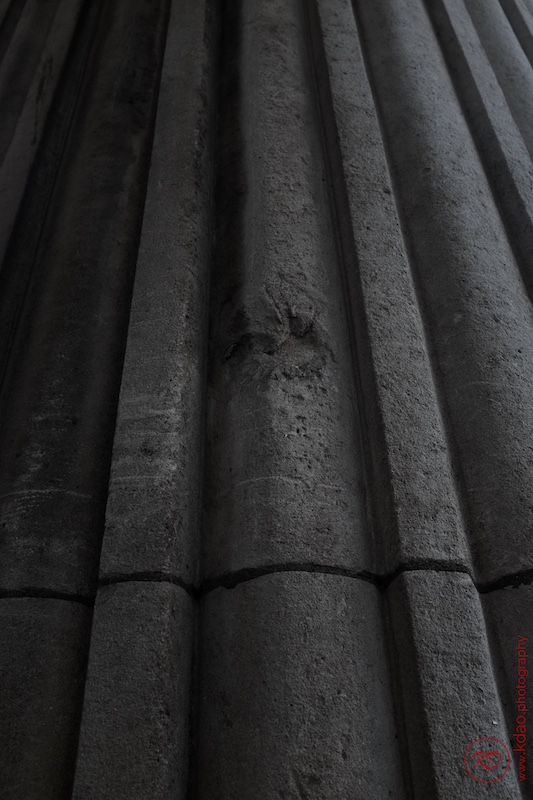In the end of March 2019, I went on a one-week holiday to Ireland to visit my buddy, Calvin, who was studying there at the time. Of course, I had my rangefinders with me to document my short journey, though my main objective really was to drink, drink, experience the fresh local cuisine, drink, drink, drink, immerse myself in the local culture and people, drink, see Calvin, drink, drink, view the scenic Wild Atlantic Way, drink, drink, and drink. Oh, and drink at the Guinness Storehouse. This series, “Wild Rover,” covers that experience.

On Easter Monday 1916 (April 24 then), Pádraig Pearse stood outside of the General Post Office on what is now O’Connell Street in Dublin and read aloud the following:
In the name of God and of the dead generations from which she receives her old tradition of nationhood, Ireland, through us, summons her children to her flag and strikes for her freedom.
Having organised and trained her manhood through her secret revolutionary organisation, the Irish Republican Brotherhood, and through her open military organisations, the Irish Volunteers and the Irish Citizen Army, having patiently perfected her discipline, having resolutely waited for the right moment to reveal itself, she now seizes that moment, and supported by her exiled children in America and by gallant allies in Europe, but relying in the first on her own strength, she strikes in full confidence of victory.
We declare the right of the people of Ireland to the ownership of Ireland and to the unfettered control of Irish destinies, to be sovereign and indefeasible. The long usurpation of that right by a foreign people and government has not extinguished the right, nor can it ever be extinguished except by the destruction of the Irish people. In every generation the Irish people have asserted their right to national freedom and sovereignty; six times during the past three hundred years they have asserted it in arms. Standing on that fundamental right and again asserting it in arms in the face of the world, we hereby proclaim the Irish Republic as a Sovereign Independent State, and we pledge our lives and the lives of our comrades in arms to the cause of its freedom, of its welfare, and of its exaltation among the nations.
The Irish Republic is entitled to, and hereby claims, the allegiance of every Irishman and Irishwoman. The Republic guarantees religious and civil liberty, equal rights and equal opportunities to all its citizens, and declares its resolve to pursue the happiness and prosperity of the whole nation and of all its parts, cherishing all the children of the nation equally, and oblivious of the differences carefully fostered by an alien Government, which have divided a minority from the majority in the past.
Until our arms have brought the opportune moment for the establishment of a permanent National Government, representative of the whole people of Ireland and elected by the suffrages of all her men and women, the Provisional Government, hereby constituted, will administer the civil and military affairs of the Republic in trust for the people.
We place the cause of the Irish Republic under the protection of the Most High God, Whose blessing we invoke upon our arms, and we pray that no one who serves that cause will dishonour it by cowardice, inhumanity, or rapine. In this supreme hour the Irish nation must, by its valour and discipline, and by the readiness of its children to sacrifice themselves for the common good, prove itself worthy of the august destiny to which it is called.
The Irish, once again, rose up against English and British oppression–at this point, 800 years long. And once again, they failed. Nevertheless, six years later, 26 of the 32 counties of Ireland were at last independent and free from cruel British tyranny.

That is all I will write for now concerning the Irish 800-year struggle for freedom. It is simply not my story to tell; I leave that to the historians or patrons at a Galway pub who have pikes ready should anyone dare mention the name Oliver Cromwell. Instead, I offer here just a few photos of the General Post Office in Dublin. This was where Pearse read aloud the Irish Proclamation on Easter Monday, and it served as the headquarters for the Irish Volunteers and Irish Citizen Army during the uprising. Six days later, it became the site of the uprising’s last stand, as fire from British artillery forced the besieged Irish garrison to surrender. The fire from British shelling gutted most of the building internally, but the granite façade remained, and it was rebuilt and restored in 1929. To this day, it remains a fully operating post office, but it is also an incredibly sacred place nonetheless.








© Khoa Dao, K. Dao Photography, 80 Proof Photos
